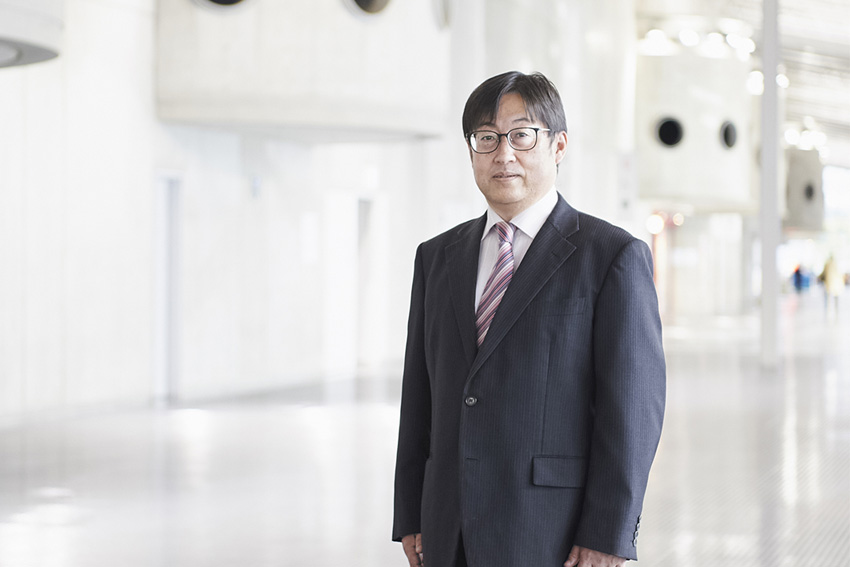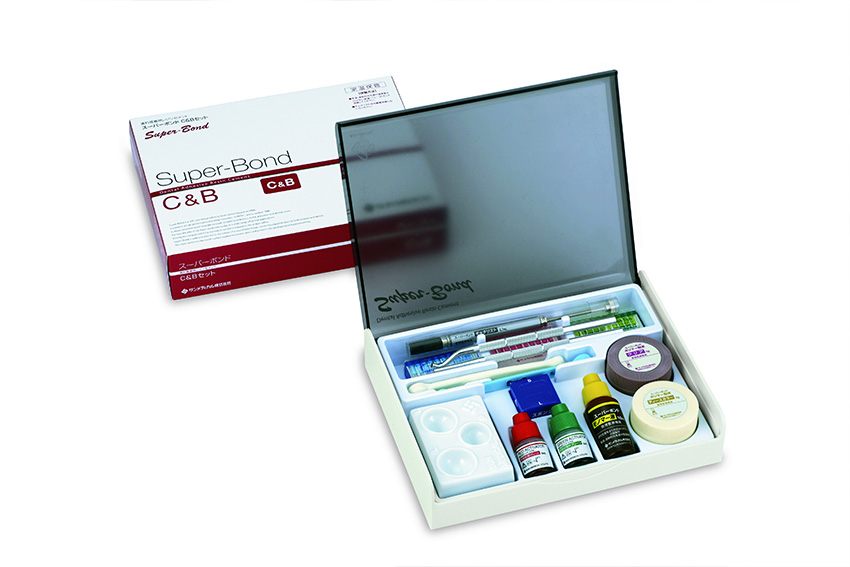Japan's success in niche healthcare fields, particularly dental care, is attributed to its high technological capabilities and stringent regulations that create a protective barrier for domestic firms. Sun Medical, a leading company in dental materials, addresses Japan's healthcare challenges by focusing on preventive medicine.

Japan is creating some of the most world-renowned solutions in the healthcare industry. In the dental field, Nissin Dental, for example, is a worldwide leader in dental education and equipment with their gum disease models or robots for dental training. Why do you think Japan is very successful in these niche fields, especially in the healthcare industry?
Japanese companies, in general, boast high technological capabilities that allow them to offer products that meet market demands. However, a notable challenge lies in their ability to effectively convert these technologies into successful business ventures. Simply possessing advanced technologies does not automatically guarantee a profitable and sustainable business model. Japan’s stringent regulations, particularly in sectors like dental care, create a protective barrier, allowing firms to evolve and thrive within the confines of Japanese domestic regulations.
Japan's aging population is putting much pressure on social security expenses. As such, efforts are being made to reduce these expenses and to shift the healthcare system from the treatment model to the prevention one. You develop various dental materials and other medical equipment. How do you help to reduce this pressure on the social security system and reach the goal of adopting the preventive model?
Japan's total medical expenditure amounts to JPY 40 trillion, with JPY 4 trillion specifically allocated for dental health. The country is grappling with an aging population, with already one-fourth of its citizens aged 65 or older. With the advancements in medicine, the number of deaths from cancers, strokes, and heart attacks has decreased. However, as life expectancy increases, oral health has emerged as a contributing factor to mortality among the elderly population.
For instance, complications such as pneumonia, often attributed to incorrect suctioning, have become more prevalent. Lifestyle diseases like diabetes, linked to dietary habits, also underscore the critical role of oral health. Sun Medical faces challenges in providing preventive medicine materials in the dental field, prompting us to concentrate on establishing a well-rounded cycle. Our approach involves providing dentists with optimal materials and technologies to deliver patients the best oral care services. Additionally, we emphasize creating a maintenance cycle aimed at enhancing future preventive measures. Through these initiatives, we aim to make meaningful contributions to the overall well-being of individuals.
At the birth of your company in 1981, you were established as a joint venture between Mitsui Petrochemical Industry, which is now Mitsui Chemicals, and Nissin to research, produce, and sell adhesive materials for dental purposes. Furthermore, Shofu acquired 20% of your company shares in 2020. What advantages could you leverage being supported by such three major actors to penetrate the dental health market?
Sun Medical was established in 1981 as a joint venture, with Mitsui Petrochemical Industry and Nissin each holding 50% of the shares. Initially, Sun Medical's focus was on developing and manufacturing products, while Nissin handled sales and marketing. This collaboration continued for several years, but the sales channel was eventually transferred to Sun Medical. As a result, Sun Medical now possesses the capabilities for research and development, manufacturing, and sales.
In 2009, Mitsui Chemicals acquired an 11% share of Shofu. Furthermore, Mitsui’s strategic move of acquiring Heraeus Kulzer, a prominent German dental company, in 2013 marked the establishment of Mitsui's dental and oral care business as one of its primary business pillars.
By 2020, Mitsui Chemicals increased its share of Shofu from 11% to 20%. Just before 2020, Mitsui Chemicals held 70% of Sun Medical’s shares, with Nissin holding the remaining 30%. However, 20% of the 70% stake in Sun Medical held by Mitsui Chemicals was later transferred to Shofu.
Sun Medical benefits from the unique synergies of its three parent companies. Mitsui Chemicals, a renowned chemical company with expertise in polymer science, is prominent in the automotive industry, collaborating with major firms like Toyota and Honda. We have successfully applied their R&D and polymer science to advance our dental products and materials. Nissin contributes high-level laboratory capabilities and university partnerships, enhancing Sun Medical's research endeavors. Shofu, with over a century of experience and ranking second in size in Japan’s dental material industry, has provided valuable insights into expanding our product portfolio and deepening our understanding of the Japanese regulatory framework and research and development procedures.
Your flagship product - the Super-Bond is a dental adhesive resin cement that cures in the presence of moisture due to unique polymerization catalysts and provides high adhesive strength. Since 1982, you have modernized and diversified the application of it. For example, you have the Super-Bond CAD/CAM crown set, the Super-Bond brush mixture SE set, and the Super-Bond EX, which allows professionals to use the brush stroke and the mixing method at room temperature. Can you explain to us what is so unique about the Super-Bond and how it is superior to similar products? Is there any other type of application you would like to adopt for this product in the future?
Super-Bond stands out due to its exceptional bonding capability, even in environments with moisture. Unlike many adhesives that struggle in the presence of moisture or air, Super-Bond utilizes a catalyst called TBB. This unique catalyst enables Super-Bond to bond effectively in unfavorable environments.
The oral cavity poses a particularly challenging setting for adhesives due to constant moisture from breathing and saliva. A strong bonding property is crucial in oral treatments, and this is precisely where Super-Bond excels.
Adding to its uniqueness, Super-Bond incorporates the monomer liquid methyl methacrylate (MMA) containing 4-META (4-methacryloxyethyl trimellitate anhydride). This liquid efficiently spreads, penetrates, and hardens. The combination of monomer liquid and the catalyst TBB sets Super-Bond apart in terms of performance.
In practical application, Super-Bond establishes a strong bond between the dentin and resin layers, creating a hybrid layer imparting a high degree of acid resistance. Teeth are typically susceptible to acid, leading to cavity formation. However, Super-Bond's application serves as a preventive measure against the potential development of secondary caries, offering enhanced protection for oral health.
One key characteristic of Super-Bond is its exceptional flexibility, serving as a shock absorber during chewing. This flexibility helps prevent the breaking of teeth or prostheses, enhancing overall durability. Additionally, Super-Bond exhibits high biocompatibility, minimizing potential harm to the human body. In cases where polymerization is incomplete in resin applications, residual adhesive can pose health risks. Super-Bond significantly reduces such health concerns with nearly 100% polymerization capability. Dentists often leverage the flexibility and biocompatibility of Super-Bond for bonding broken teeth, offering a reliable solution for dental restoration. While not originally intended for this purpose, there are instances where dentists use Super-Bond to bond split tooth roots.
Although these applications aren’t officially registered, they are actively utilized in dental practices. Currently, Super-Bond’s regulatory registration is classified under Class II, there is potential for broader applications if moved to the Class III classification. Such reclassification could significantly expand the range of uses for our product.

Adhesive material in dentistry is a must to ensure the good health of patients, but it comes with a series of issues or challenges, such as the capacity to harden within a highly humid environment. Moreover, the sealability and hermeticity must be perfect to avoid any contamination or the adhesive must polymerize well with the tooth and the components. How do you overcome these challenges and offer a dental adhesive with the utmost quality?
Despite its numerous advantages, Super-Bond has a downside that we actively address through comprehensive training programs. Our product involves the use of various liquid and powder components. Unfortunately, improving the product into an easy-to-handle paste form remains a hurdle. Compared to competitors’ products, our products require an extra step.
Ongoing research and development efforts are crucial to ensure dentists achieve optimal results and maintain high quality. Simultaneously, we emphasize training programs to enhance dentists' confidence in utilizing our products effectively. We have integrated Super-Bond training into the curricula of 29 dentistry universities, representing approximately 80% of all such institutions in Japan.
Our efforts extend to practical, hands-on training sessions, including study groups and academic meetings. By incorporating these methods, we aim to raise awareness and facilitate easier usage of Super-Bond. This grassroots and continuous training approach has enabled us to garner a significant share in Japanese dentistry. In the past, we strategically sent a renowned dentistry professional to the US and Korea to increase our presence in those markets. We have also conducted hands-on experience sessions in France. Moving forward, we are dedicated to exploring new avenues to expand our market share globally.
What role does partnership play within your business model, and are you searching for new partnerships in overseas markets?
Overseas expansion is key to our growth, where finding and cooperating with a local partner is essential. Two significant challenges for a company of our scale venturing abroad are navigating diverse medical regulations unique to each country and effectively conveying the value of our Super-Bond product.
Firstly, local partners play an important role in comprehending the complexities of medical regulations, ensuring that we adhere to appropriate legal procedures for market entry.
Secondly, conveying the unique benefits of Super-Bond requires hands-on experience, making it essential for dentists to truly appreciate its competitive edge. Our marketing efforts involve additional steps, underscoring the importance of finding local partners who not only recognize the excellence of our product but also possess the ability to effectively communicate its value to local dentists.
Our current focus is the US and China, where we have existing partners we work with, and we are looking for new partners in other potential countries. At the same time, we are focusing on strengthening our overseas channel through our parent companies. We started selling Super-Bond through Shofu Dental Brazil last year.
Japan is widely known for its ability to innovate and find innovative products, especially in the medical field. What is the main focus of your R&D strategy, and are there any new products or developments you can share with us today?
Our R&D is focusing on three major segments in addition to our existing adhesive material sector. Recognizing the broader trend toward digitalization in dentistry, we anticipate significant changes in workflows. The increasing adoption of automated milling machines and 3D printers requires the development of diverse materials such as disks, blocks, and inks. We must continuously develop and provide materials tailored to support the evolution of these digital tools and machinery.
As preventive dentistry becomes mainstream, we aim to contribute by providing new solutions and materials to cater to preventive dental care practices.
Once regenerative dentistry is established, the way of treatment will be changed. Thus, we have to work closely with our parent company, Mitsui Chemicals, to explore solutions and materials for the regenerative dentistry sector.
Imagine we come back three years from now for your 45th anniversary and have this interview all over again. What would you like to tell us? What are your dreams for this company, and what goals would you like to accomplish over the next three years? How would you like your company to be seen by international readers?
Currently, 90% of Sun Medical's sales are from the domestic market, and we will continue to focus on that. We want to take the lead in providing new options and solutions that effectively address pressing social issues such as the aging population. As an integral part of the dental division within the Mitsui Chemicals Group, we acknowledge our position as one of the smaller dental companies. Nevertheless, our unique products, such as Super-Bond, set us apart.
We have to fully leverage our competitive advantages. We want to bolster our capabilities and establish a stronger presence within the group. This will greatly contribute to the expansion of the group in the near future.
For more details, explore their website at https://www.sunmedical.co.jp/english/index.html
0 COMMENTS